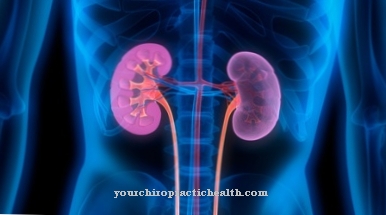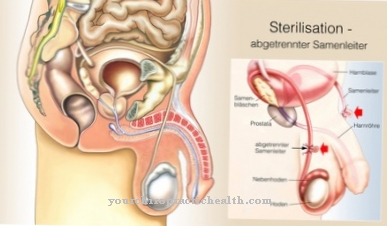Of the Prick test is an internationally recognized standard procedure for the determination of type 1 allergies (immediate reaction) such as pollen or food allergies. As a rule, a prick test is associated with only minor risks and side effects.
What is the prick test?

As Prick test is an allergological test method which, analogous to the scratch test, can be used to identify the allergens (allergenic substances) that trigger a type 1 allergy (antibody-mediated allergic reaction of the immediate type).
Food allergies, allergic asthma or hay fever are characteristic allergies that can be detected in a prick test. For this purpose, different allergen-containing test solutions are applied to marked areas of the skin on the forearm or in the upper back area and the skin is pricked on the surface with a prick lancet or prick needle. Based on the reactions, the triggering allergen and the severity of the specific allergy can be determined.
Function, effect & goals
A Prick test is usually used to detect or exclude sensitization to certain allergenic substances (allergens).
The prick test is particularly suitable for the detection of type 1 allergies. Type 1 allergies are characterized by the fact that the immediately occurring (a few seconds to minutes) allergic reaction is mediated by IgE antibodies (immunoglobulins E). Upon contact with the allergen, the organism forms IgE antibodies that bind to the mastocytes (mast cells) of the immune system and cause the release of inflammatory mediators (inflammation messengers) such as histamine and leukotrienes. These cause acute inflammatory reactions (including hay fever, allergic asthma, urticaria or hives).
A standard test usually comprises around 15 to 20 test solutions with the most common allergens, whereby these can be individually adapted or expanded (e.g. with special foods, pollen types, insecticides) depending on the specific question. The allergens to be tested are dropped onto areas of skin marked with a pen on the inside of the forearm or on the upper back. Then the skin is pricked with a prick needle or prick lancet on the surface and without bleeding so that the allergens to be tested can penetrate the epidermis.
In the presence of an allergy, the release of histamine causes the fine blood vessels to expand and cause reddening. The blood vessels also become more permeable, so that interstitial fluid (tissue fluid) can escape and the skin swells (wheals). The additional nerve irritation can also cause pruritus (itching). The evaluation or assessment of the test result usually takes about 15 to 20 minutes and is compared with a positive (0.1 percent histamine solution) and a negative control with saline solution for a better assessment.
In the negative control with sodium chloride, no wheal formation should manifest itself, whereas in the positive control this should occur due to the applied histamine. The severity of the allergy can be determined based on the diameter of the existing redness and wheals and the corresponding symptoms.
Finally, the results are recorded in a test protocol or allergy pass. A specific form of the prick test is the so-called prick-to-prick test, in which the prick lancet is first pierced into the test solution and only then into the marked area of skin.
Risks & side effects
Usually a correlates Prick test with few side effects and risks, although in rare cases pronounced local reactions can be caused.
In very rare cases, generalized pruritus, shortness of breath and / or anaphylactic shock (circulatory collapse) can be observed. The risk of more pronounced reactions is increased in particular if non-standardized allergen solutions (including substances brought by the person concerned), to which there is strong sensitization, are tested as part of the prick method. In addition, in some cases evaluating a prick test can be difficult. The skin reaction does not have to reflect the degree of sensitization or allergy in every case.
Despite a stronger sensitization, in some cases only a weak reaction can be triggered and vice versa. In particular, applied solutions with pollen and / or food allergens can contain substances that also have botanically related species, so that although a reaction can be observed, the underlying allergen has not been identified.
In addition, certain medications such as antihistamines, corticosteroids, sleeping pills, sedatives and immunosuppressants (drugs that suppress the immune system) can influence the result of the prick test and should be discontinued beforehand if necessary. In the run-up to the prick test, irritation, inflammation and damage in the test area must also be ruled out, as these can lead to an increased reaction and correspondingly false positive results.



























